IoT
Connected Farming: Short Guide for Agribusinesses
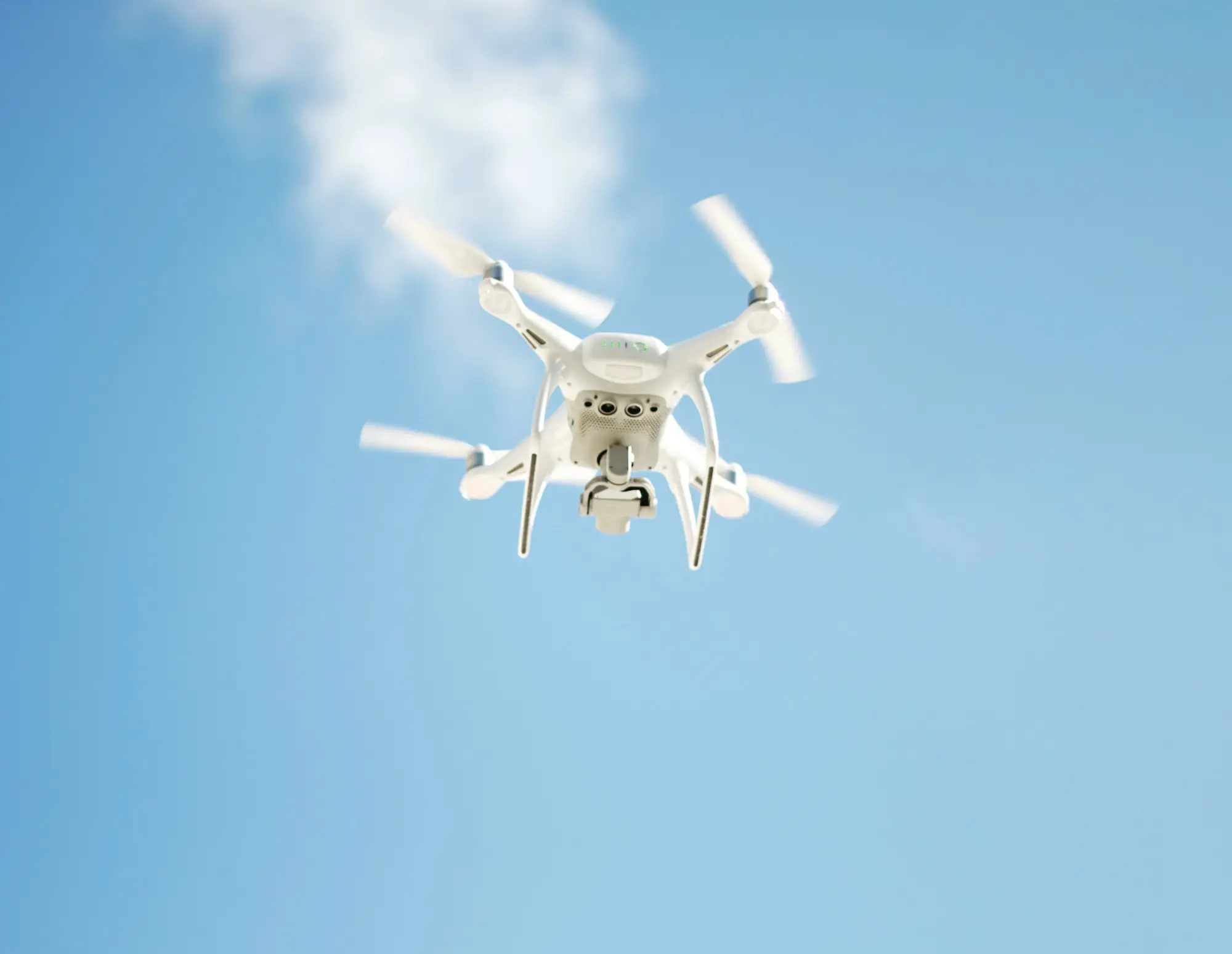
According to the United Nations, the global population is expected to exceed 9 billion people by 2050, growing by almost a third of the current number. The Food and Agriculture Organization says that such an increase in the population’s global demand for food has a boost of 70% in the food production and crop cultivation rate. However, this rapid population growth also introduces other problems, such as increasing competition and exploitation of land, water, and other natural resources.
These issues (not to mention climate change and global warming) present an urgent need to reduce the food system's dependence on our environment. Consequently, the need for digital transformation and an evolutionary agricultural paradigm to keep up with the ever-growing global demand for more food and crop production is necessary to guarantee sustainable development.
What is Connected Farming, and How Did IoT Find Its Way into Agriculture?
Smart farming technologies, connected agriculture, and precision agriculture are real options for approaching digital transformation and discovering alternative ways to meet the increasing demand and global food supply needs. Smart farming technologies involve integrating yield monitoring technology and data-driven connected agriculture applications to increase crop yield and the quality of food products.
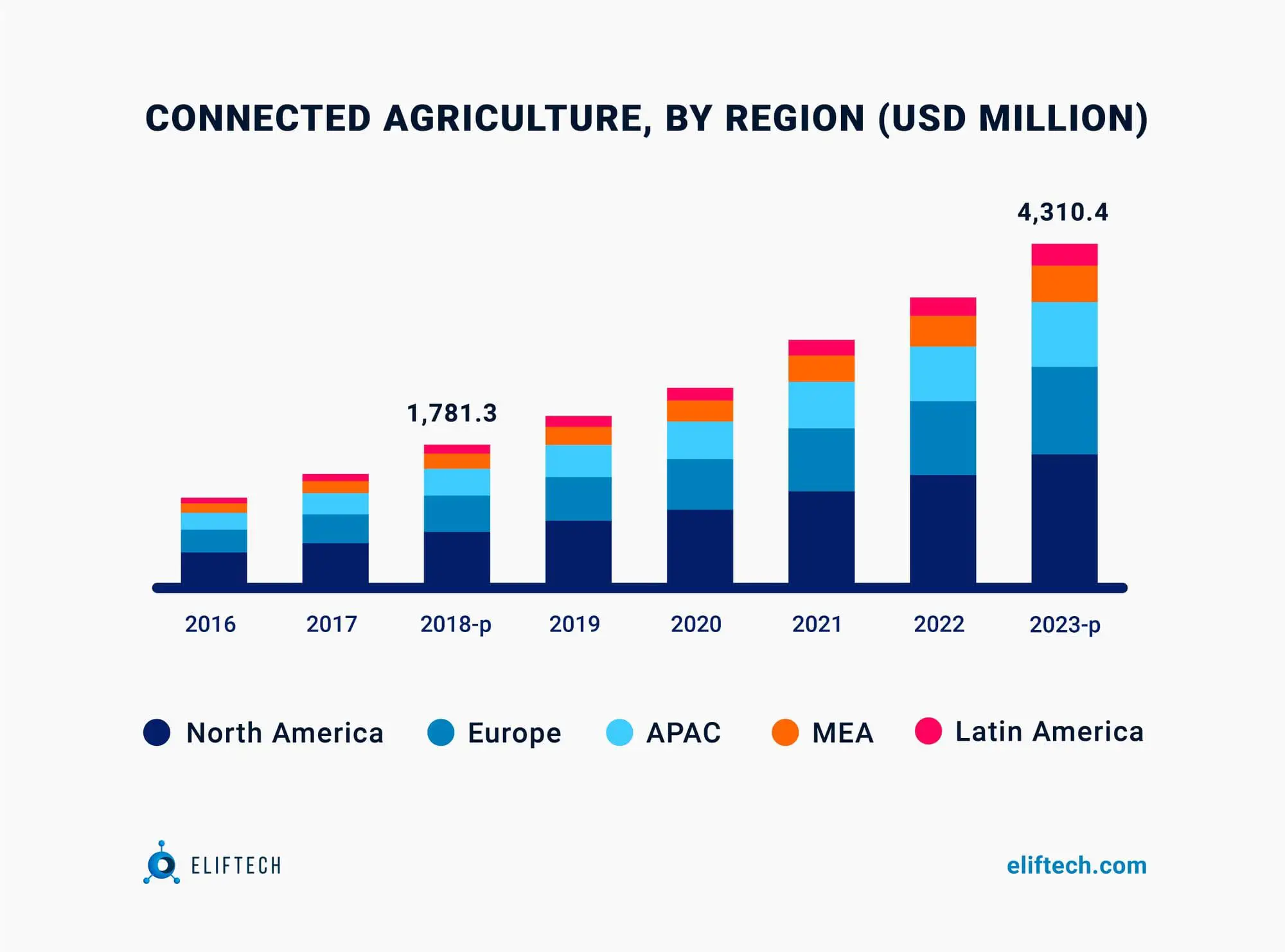
Connected agriculture involves planning, developing, and applying innovative IoT tools, including connected technologies and digital technologies in rural areas, fisheries, forestry, and livestock. IoT solutions are introduced to boost connected agriculture and rural development by improving access to valuable information, thus helping farmers who depend on connected agriculture make the best decisions possible and use available resources most efficiently and sustainably.
IoT systems that can be used for connected agriculture include a wide range of devices, IoT networks, services, and mobile applications, from state-of-the-art Internet-connected technologies, digital tools, and sensor tools to traditional technologies with a long history of existence, such as radios, landlines, mobile phones, television, and satellites.
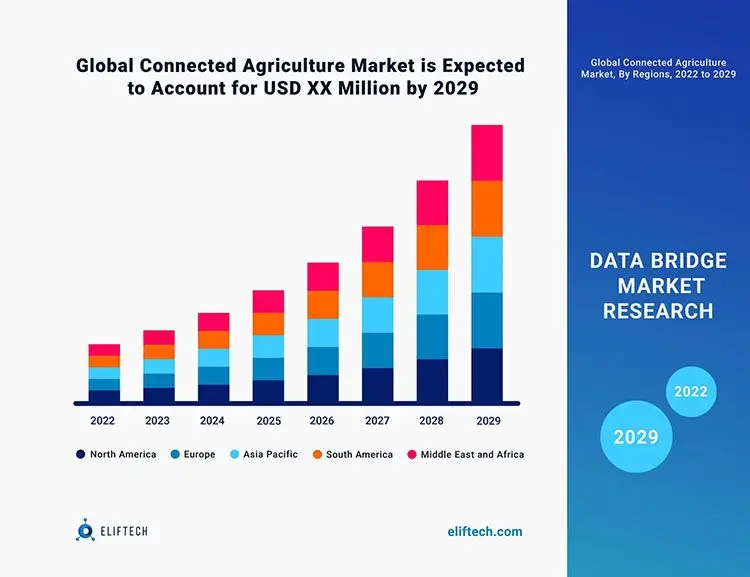
The concept of connected agriculture goes beyond the tasks of e-government in this field since it covers not only agricultural services provided to citizens by the state (for example, farmers and growing population) through IoT systems but also a range of products, services, and infrastructure provided by the government, the private sector, agriculture organization, and research organizations, and rural advisory services, NGOs and farmers' organizations.
Connected farming and connected agriculture create a powerful potential to stimulate economic growth, raise income levels and improve the quality of life by enhancing the efficiency of agricultural production and developing the value chain. In addition, IoT creates opportunities to address some of the most pressing problems in agriculture, such as climate change, pests, diseases, and poor market access.
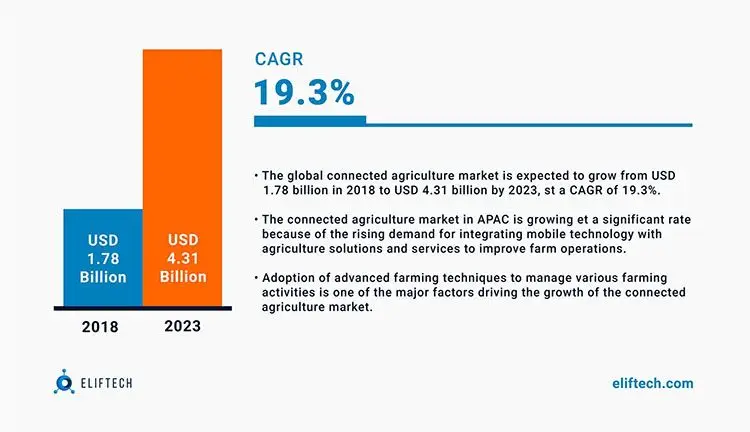
The cross-industry nature of the IoT stimulates the development of other industries. For example, a unique IoT-based platform can serve multiple sectors, such as agriculture, healthcare, and transportation, by providing consumers with product and quality information, facilitating the timely delivery of products to connected agriculture markets, and enabling farmers to cooperate with small-scale producers and connected agriculture markets.
Modern agriculture is knowledge-intensive, and today's farmers live in a challenging environment. There is a constant need to provide the necessary information to those who make decisions on activities to improve the population's lives, including strengthening food security in the context of stable population growth. Providing such knowledge can be complex, and because geographic areas characterize connected agriculture, the information must be relevant to local conditions.
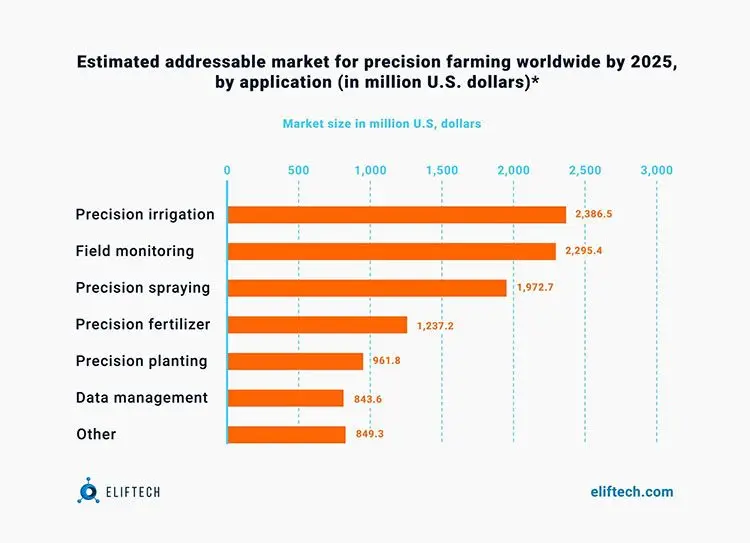
The spike in the use of mobile phones worldwide creates new opportunities for sharing and accessing information. About half of the world's population owns a mobile phone; if we consider only the adult population, this figure will be much higher. While many people in rural areas use mobile phones' basic functionality, i.e., voice and text services, smartphone use is growing exponentially. The rapid growth of broadband access and the increase in availability provide excellent opportunities for developing connected agriculture. Many connected agriculture developments tested worldwide aim to improve the population's well-being by increasing labor productivity and agricultural income and reducing risks.
Connected Farming Techniques
How are large datasets collected by intelligent agricultural connected sensors making lives better and businesses successful? This data can be used to track the health of your business, staff productivity, and equipment efficiency.
- Internal processes improved control and, as a result, reduced production risks. The ability to anticipate the production volume allows you to plan a more efficient distribution of products. If you know exactly how much harvest you will gather, you can be sure your product will not go unsold.
- Manage costs and reduce waste through enhanced production control. You can reduce the risk of crop loss by detecting anomalies in livestock health and crop growth.
- Improving business efficiency by automating processes. Using smart devices, you can automate several functions in the entire farming cycle and production cycle, such as irrigation, fertilization, or pest control.
- Improving the quality and volume of products. Achieve better control over your production process and maintain higher crop quality and growth potential standards through automation.
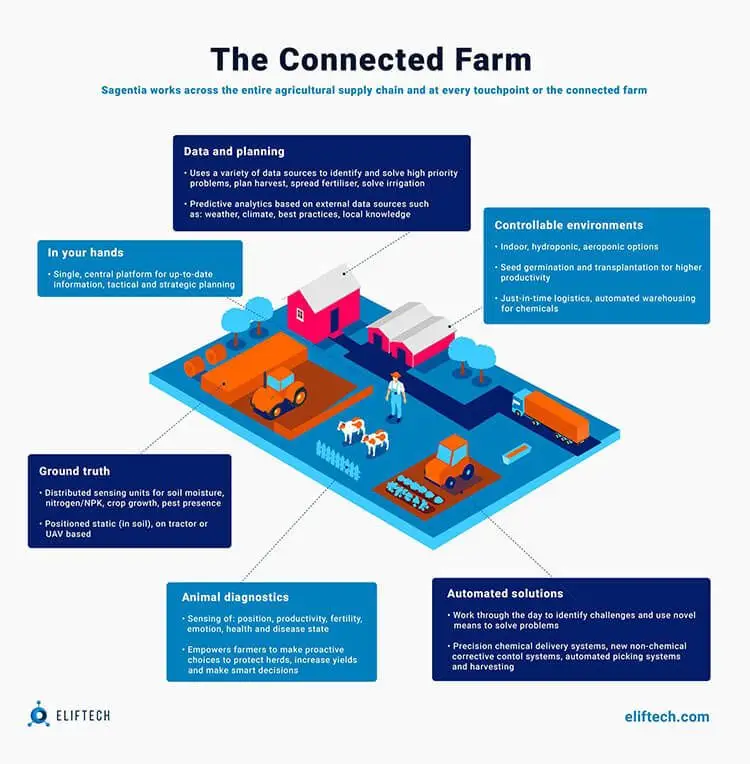
Smart farming uses cases globally. Remote sensing devices, like remotely connected sensors placed in the soil for measuring blueberry irrigation in Chile, have reduced the volume of water used in agriculture by 70%. In India, farm data has been used by smart agriculture solutions to predict and prevent crop diseases, reducing the risk associated with the failure of crop production. Similar data-driven approaches have helped “connected farmers” in the fruit farming community of Slovenia.
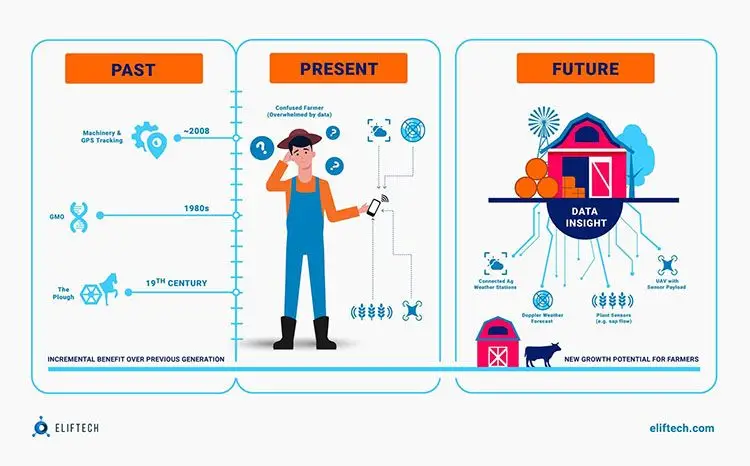
Smart farming and smart agriculture solutions, however, go beyond primary production. They have influenced the food supply chain by employing big data analytics to provide useful insights about the entire farming process and by facilitating real-time operational decision-making, thus revolutionizing existing agriculture business models.
In addition, connected farming enhances conventional farming practices through on-field smart sensors and devices. These sensors and machines work synergistically to provide efficient farming experiences and an improved crop yield. However, although beneficial to the industry's productivity, using heterogeneous, internet-connected devices has exposed potential cyber-attacks and vulnerabilities in the agriculture sector. These attacks enable remote control and exploitation of the on-field sensors and autonomous machinery (tractors, aerial vehicles).
Potential agricultural attacks can create an unsafe and unproductive farming environment. For example, exploits that can destroy a field of standing grown crops, flood the farmlands, and over-spray pesticides using smart drones can cause unsafe consumption and economic deterioration. Such attacks, if they are large-scale and coordinated, are also referred to as agro-terrorism, and they can disrupt the economy of an agriculture-dependent nation. In addition, a report released by the U.S. Department of Homeland Security extensively elaborates on various cyber threat scenarios in precision agriculture, further emphasizing the need for research in this critical domain.
The Agriculture industry adds 6.4 % of the world's economic production with a total of $5,084,800 million.5 Agriculture, food, and related industries contributed $1.053 trillion to U.S. global gross domestic product in 2020. Simultaneously, United States' large farms contributed $132.8 billion, almost 1 % of the GDP. Smart agriculture contributed 1.2% to the European Union's (EU) global gross domestic product in 2020, whereas the EU's smart agriculture industry added a record-high gross value of EUR 188.5 billion. Out of 226 countries, nine have the agriculture sector as the dominant sector in their economy. The U.S. food and agriculture system has a total economic impact of $7.06 trillion, and one-fourth of the overall jobs in the country are connected to it.
Farm Security: Tech, Devices, Vehicles, and Monitoring
Extensive research on secure IoT systems, IoT devices, IoT networks, smart vehicles, drones, edge clouds, and wireless communication is already available and might be extended to the connected farming ecosystem. However, most of the time, research is conducted on these connected technologies without consideration of the environment in which they are used.
The dynamic, connected farming environment has unique characteristics, such as farm equipment, labor sharing, and operational decisions, influenced by environmental pressures. In addition, domain-specific issues like location, user skill set, insider threats, and generated data need smart-farming-specific security mechanisms.
Examples of Using the Internet of Things in Smart Agriculture
1. Monitoring of climatic conditions: The most popular gadgets for connected farming are weather stations, which combine a complex of weather sensors. Placed across the field, they collect various data from the environment and send it to the cloud.
2. Automation of greenhouses: IoT sensors provide accurate real-time information about the microclimate in the greenhouse, lighting, temperature, soil conditions, humidity, and environmental data. Plus, weather stations can automatically adjust conditions according to the set parameters. Greenhouse automation systems use a similar principle.
3. Crop management: Like weather stations, crop management tools require crop-specific data, from temperature and rainfall to the leaves' water supply potential and the crop's general condition. You can access crop monitoring and detect anomalies to prevent disease outbreaks or infections that could harm your crop.
4. Livestock farming monitoring and management: As with crop monitoring, agricultural IoT sensors can be connected to farm animals to monitor their health and record performance. Livestock farm tracking (animal tracking) and monitoring help farmers collect data on animals' health, well-being, and physical location. For example, multiple sensors can identify sick animals so that “connected farmers” can separate them from the herd and curb infection.
5. Precision farming: Precision farming concerns efficiency and accurate data-based decisions. Smart agriculture is one of the most effective applications of the Internet of Things. Farmers and agrarians can collect a wide range of metrics using IoT sensors on every aspect of the field data, like microclimate and ecosystem: lighting, temperature, soil conditions, humidity, CO2 levels, and pest infestations. This data allows farmers to assess the ultimate amount of fertilizer, water usage, and pesticides their crops need, reduce costs and grow better, healthier crops.
6. Agricultural drones: One of the most promising advances in connected farming is using drones in connected agriculture. Also known as UAVs, drones are better equipped to collect agricultural data than airplanes and satellites.
7. Statistical analytics for connected farming: Precision farming and predictive analytics go hand in hand. While IoT-connected technology and smart sensors are a gold mine for highly relevant real-time data, data analytics helps farmers understand them and make important predictions: harvest time, disease and infection risks, and crop volume. In addition, data analysis digital tools help farmers make agriculture, which by its very nature is highly dependent on weather conditions, more manageable and predictable.
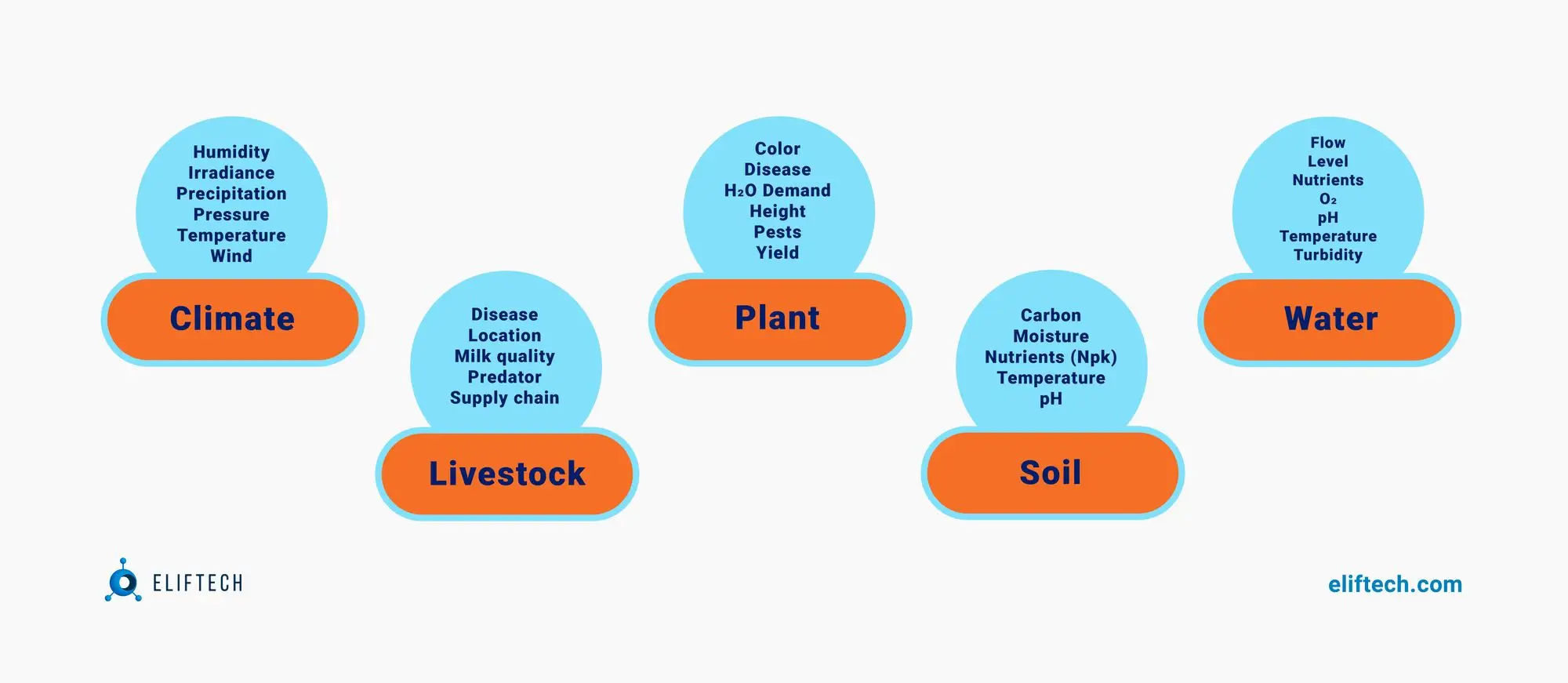
Things to Consider Before Developing Your Connected Farming Solution
Multi-layer architecture for the connected farming IoT ecosystem adapts and extends the widely discussed IoT equipment and Cyber Physical System multi-layer architectures.
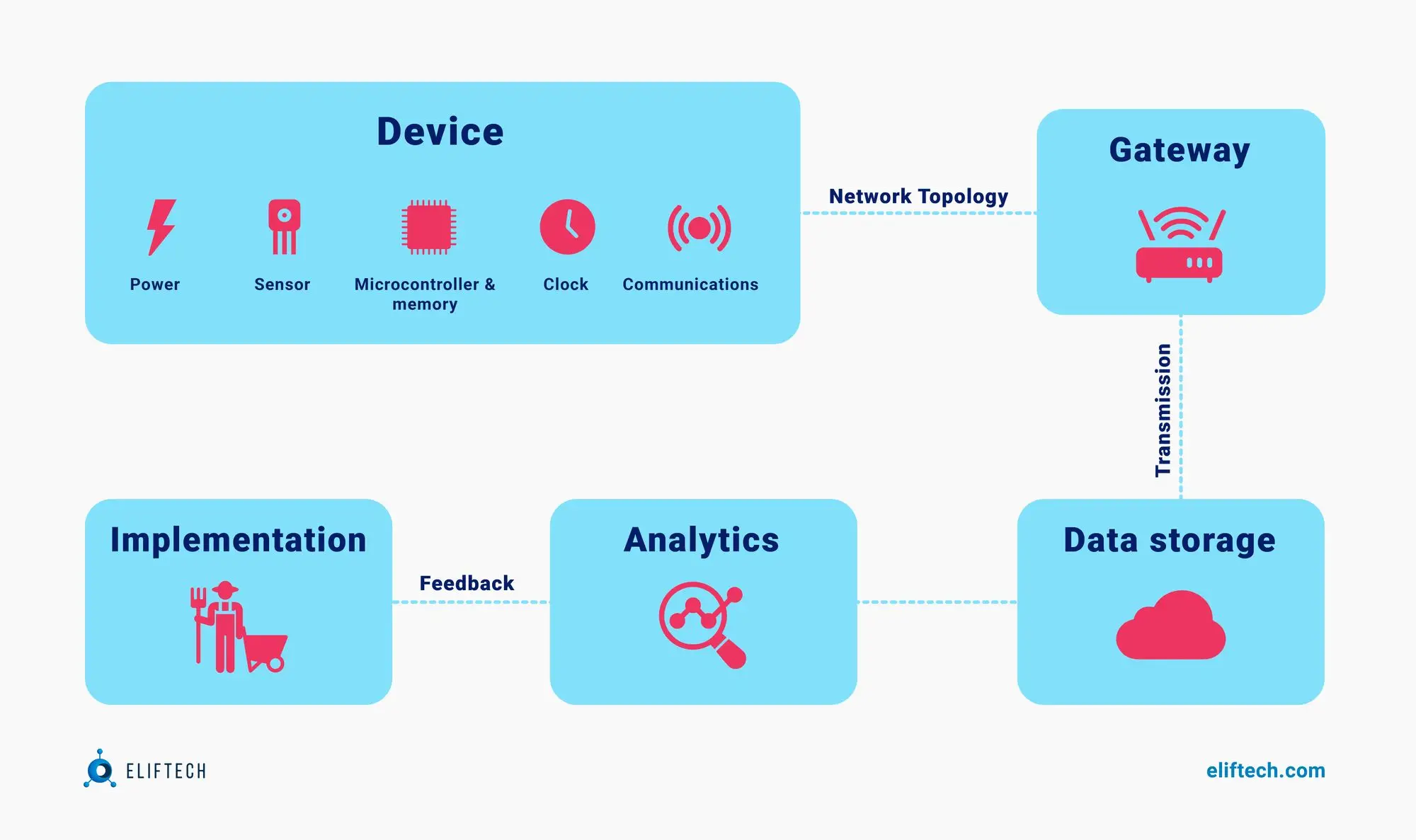
These architectures recognize the use of cloud and edge services and their infinite capabilities to fully harness the data collected by sensors and generated by smart devices at the physical layer. Modern connected farming architecture also reflects different user applications envisioned at various layers. Additionally, it considers vast amounts of data collected at edge or cloud layers and highlights the need for various multi-cloud or edge-cloud scenarios. Overall the architecture consists of four layers:
- The physical layer,
- The Edge layer,
- The Cloud layer,
- And the Network Communication layer.
The latter spans across all three previous layers and connects them.
Physical Layer
The architecture's bottom layer comprises real sensors and gateway devices spread across smart farms, particularly smart agriculture farms or greenhouse buildings. These devices include drones, autonomous tractors, sensors embedded in livestock, and hub devices installed to provide communication among smart objects or with a central cloud. These devices are responsible for data sensing and, based on the information gathered, help actuate other devices to realize various connected farming use cases.
For example, they collect real-time information about weather conditions, soil moisture level, or cattle body temperature. These can be sent to the edge or cloud-supported intelligent decision-making systems to provide recommendations and enable automation. For example, data gathered from soil moisture sensing devices in the field, after getting processed in the edge or cloud, can help determine the watering needs at the farm, optimize the irrigation schedule, and offer a convenient experience to the end farmers.
Edge Layer
This layer is closer to the end-users than the physical one, and it consists of multiple edge nodes. It reduces the computation load of the centralized cloud layer and the network load. Each node represents a gateway that includes services such as connectivity solutions, data capturing, security monitoring solutions and detection, prediction, and real-time decision support. Data capturing benefits include data aggregation, filtering, encrypting, and encoding real-time data streams.
Prediction services usually rely on machine learning models trained on the central cloud and deployed on the edge layer. They are used to predict and categorize certain events related to animal welfare or plant health, crop yield, categorization of plants or livestock health, and predictions about the amount of fertilizer and water needed for a patch of land to maximize yield monitoring or estimate soil erosion.
In addition, security monitoring and detection mechanisms can be deployed for real-time monitoring solutions of abnormal events and classifying these events as malicious or benign. This includes services like anomaly detection and device failure prediction.
Cloud Layer
Precision Agriculture (PA) and cloud computing paradigms offer advances to enhance connectivity potential and provide necessary connectivity infrastructure. The cloud layer is generally virtualized in data centers and communicates with the other layers using the Internet. Typically, these cloud layer platforms follow the Platform as a Service (PaaS) architecture model, where the users can focus on running specific applications and importing their data.
The PaaS provider runs and maintains a data broker that collects data being pushed in from the edge layer and saves these records in a Distributed File System (DFS). This stored data is used by analytic software to mine knowledge. The data analytics component computes insights delivered to the end user through a client application running on the user's machine.
Popular farm equipment manufacturers like John Deere and Farmer's Business Network have created several cloud-based products that help users monitor various sensors and vehicles used on a farm. These PaaS systems run on popular platforms like Amazon Web Services and Google Cloud. However, how these connected farming PaaS systems are built using these popular cloud computing platforms also introduces various security challenges in the connected farming ecosystem.
Network Communication Layer
The common theme for most, if not all, current technologies is "connectivity infrastructure." With a growing need for a boundaryless Internet, the idea of a network for intelligent devices has become a reality. The Internet of things allows connected devices to be monitored, controlled, and suitable for sharing data. This data can be analyzed and used by multiple applications. For example, in connected farming, the network layer facilitates necessary connectivity infrastructure like edge and physical layer connectivity's potential.
It provides an interface for them to interact with the cloud layer. From exchanging soil temperature through a peer-to-peer sensor communication system to sending farm monitoring data to the cloud data stores through high-speed mobile networks such as 5G or updating the farmer about crop quality via an ad-hoc wireless topology, the network layer offers a means of communication to bind all other layers.
The network layer has two main responsibilities in a connected farming system. First, there is a diverse set of heterogeneous devices in every layer of a connected farming system. The mobile network layer provides a secure and efficient network stack where wire, wireless and mobile subnetworks can communicate in a consistent and cross-layer manner. The second responsibility of the coating is to preserve connectivity and, therefore, increase availability. From data storage and big data processing systems used to analyze collected data to individual sensors that collect information from the field, this layer is needed for system-wide cyber communication.
Use Cases: Smart Farming is Today's "Green Revolution"
Scientists say that by 2050 the world's 10 billion people will require a 70% increase in global food production. Significant improvements in farm productivity require substantial investment in developing new sustainable agricultural solutions. The creation and application of new technologies greatly simplify agriculture.
- Blackhills Farm in New Zealand, a 400-hectare property with over 2000 cattle and 800 sheep, has adopted the SCADAfarm16 system, which allows the farm owners to monitor water and energy consumption remotely, the location of irrigators, soil moisture measurements, and real-time weather information. The farm uses Schneider Electrics' EcoStruxure IoT architecture, which corresponds to our physical layer and sensors. It also utilizes the Microsoft Azure IoT suite with communication provided by the Vodafone New Zealand cellular network, which corresponds to our framework's cloud and network layer.
- The United States Department of Agriculture uses Beltsville Area Research Center, a 7,000-acre farm, as a test bed for connected farming technologies. The connected farm was equipped with a physical layer including sensors, drones, and IoT-enabled farm gadgets to avoid poor connectivity. This effort was a part of a public-private program called Farmbeats. The connected farm utilizes necessary connectivity infrastructure by adopting a two-layer hybrid network: a layer based on TV White Spaces connected technology for connectivity over long range, which links the farmer's home Internet to IoT base stations on the farm, and a layer based on Wi-Fi digital technology that connects smart sensors to the IoT base stations. IoT gateways are equivalent to the edge cloud layer (Figure 3) in our proposed general architecture. Additionally, the data collected at the IoT stations are pushed to the cloud layer, which employs AI algorithms for data analysis.
- At a 492-acre connected farm in North Carolina, United States, researchers, and local farmers are developing a distributed airborne monitoring system to keep track of crop health and detect possible crop damage or nutrient deficiency zones. To accommodate growing demand for more food and increase the quality and quantity of agricultural production, it is necessary to improve farming management practices and technological capabilities of farm fields. Accordingly, unlike traditional crop management methods that rely on farmers or ground vehicles to assess crop health status, this collaborative, connected farming project allows farmers to optimize their work by using autonomous technology to perform aerial monitoring of agricultural fields, therefore saving time and money while preventing crop damage. In this project, a group of drones monitors the field in the physical layer. Then, drones communicate through a network layer, sending collected data and images to land processing bases for initial data cleaning and pre-processing. Finally, pre-processed data is sent to the cloud layer for storing and knowledge extraction functionalities.
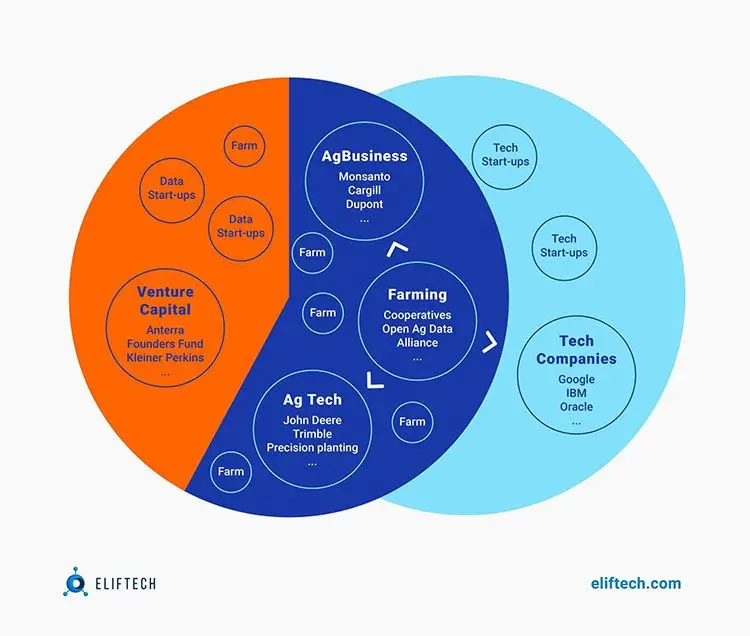
Also, we’ve selected ten tech startups that have no big agriculture stakeholders and investment or federal funding but are nonetheless successful examples of connected agriculture and precise farming:
- EAgronom is an Estonian startup developing eAgronom, a farm data management software. The product allows you to keep records of farm operations in the fields, manages storage and logistics, and helps farmers with complex calculations. Access to the system integrators is possible through the web interface and mobile central platform.
- Augmenta system integrators allow farmers to get a complete picture of the crop health and quality (down to sugar content) of their specific crops using a PnP device that scans and analyzes plants as the tractor moves across the field. Video data recorded in 4K resolution captures every centimeter of the field but also simplifies automation tasks such as fertilizing with the help of smart software. According to the tests, the "field analyzer" increases the productivity of the fields by 12%, raising the crop's protein level by 15% while using 13% fewer agrochemicals.
- Eden Advanced Technologies is a Dutch startup that designs and manufactures fully autonomous urban farms. The company has developed an aeroponic module capable of protecting crop health and growing 35 crops, including lettuce, kitchen herbs, tomatoes, paprika, strawberries, and beans. The main advantage of this type of farm is that the plants are grown in a completely controlled environment, independent of seasons and weather conditions, and without harmful pesticides, herbicides, and other drugs.
- Sencrop is a pioneer in connected agriculture. The customer is offered a range of field-connected sensors, data storage, and a data processing platform. The Sencrop sensor network records air temperature, hydrometry, leaf surface moisture, and wind speed, providing the user with real-time data and recommendations for further action. At the beginning of 2019, the startup raised $10 million in investments.
- Faromatics is a Spanish startup that makes robots for the poultry industry. For example, the ChickenBoy robot, fitted with sensors and cameras, allows you to inspect the poultry house, measure air quality, humidity and temperature, and check the agricultural equipment's operation. In addition, the machine can find dead birds, analyze chicken manure, and detect intestinal diseases.
- Gamaya is a Swiss company that uses drones and artificial intelligence to provide the farmer with a precise and detailed picture of the condition of the farm's water and fertilizers, the quality of the crop, and the need for crop protection products. The startup has attracted investors such as former Nestlé CEO Peter Brabeck, Philip Morris, and Mahindra and Mahindra.
- AgroSustain, a division of the University of Lausanne (Switzerland), has developed a digital technology that reduces the growth of fungal pathogens in fruits and vegetables by 80%. Their product, AgroShelf+, is a non-toxic sprayed onto crops that extends the shelf life of fruits and vegetables by at least one week. Founded in 2018, AgroSustain has won numerous awards and grants in Switzerland and Europe for its food waste solution.
- Knott is a startup developing tech IoT solutions (software and hardware) for monitoring agricultural equipment. The installed hardware module on tractors, trailers, and seeders collects all the necessary data, which is subsequently processed by the appropriate software. As a result, the farmers get a powerful cost-reduction tool (to lower the costs associated with mechanization.)
- LettUs Grow is a UK-based manufacturer of aeroponic growing solutions for lettuce, leafy greens, and kitchen herbs. Instead of soil, grown crops are placed in a nutrient-rich solution, resulting in a 70% increase in growth rate and a 95% reduction in water costs. With a growing global population, these types of urban farms could be the farms of the future.
- Sabi Agri is a French startup that designs and manufactures electric tractors. Its flagship product, Alro, is a robotic electric tractor with similar horsepower to traditional machines. However, the operating time of the tractor can reach 8 hours, and its operation is six times cheaper than conventional thermal tractors.
Making agriculture more productive and sustainable requires fundamentally new approaches to managing agricultural resources, such as water, soil, and nutrients. Isotopic techniques track and quantify carbon, water, and nutrient turnover and dynamics in agroecosystems to improve optimized agricultural practices. In addition, many farmers need assistance in developing climate-connected farming practices that can adapt to and mitigate the impacts of climate change and boost food production.
IoT is improving the productivity and sustainability of agriculture and provides better data management and smarter utilization of resources, especially natural resources such as land, water, soil, and genetic resources. Finally, connected farming introduces opportunities for agricultural conservation practices that bring a variety of positive results: reduced soil erosion, better water retention in the soil, nutrient availability for crops, accumulation of organic matter in soils, increased yields, better animal welfare and animal health, and overall farm productivity.
If you are considering going IoT on your farm or ready to adopt connected agriculture methods, get a consult from the Eliftech team!
